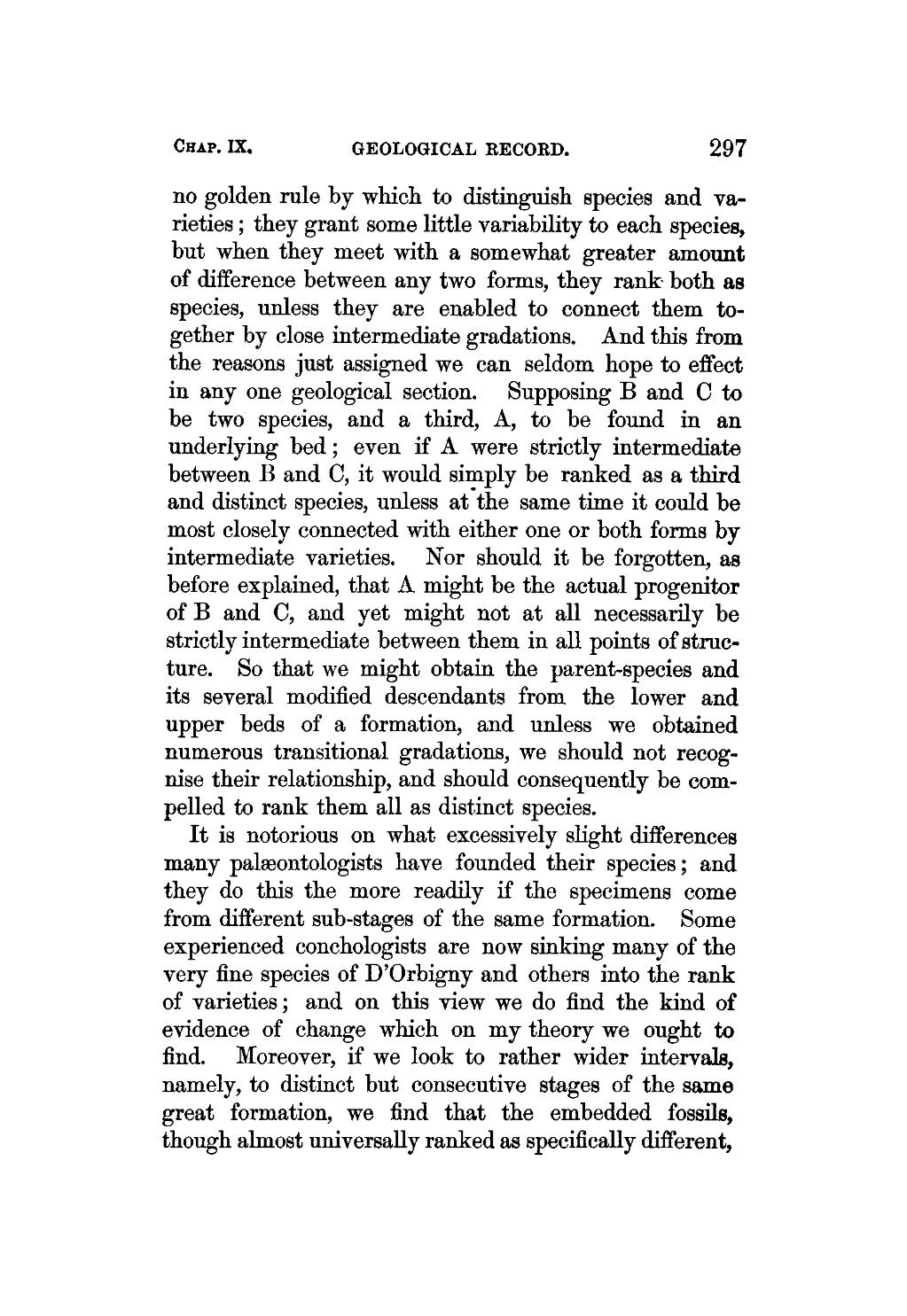no golden rule by which to distinguish species and varieties; they grant some little variability to each species, but when they meet with a somewhat greater amount of difference between any two forms, they rank both as species, unless they are enabled to connect them together by close intermediate gradations. And this from the reasons just assigned we can seldom hope to effect in any one geological section. Supposing B and C to be two species, and a third, A, to be found in an underlying bed; even if A were strictly intermediate between B and C, it would simply be ranked as a third and distinct species, unless at the same time it could be most closely connected with either one or both forms by intermediate varieties. Nor should it be forgotten, as before explained, that A might be the actual progenitor of B and C, and yet might not at all necessarily be strictly intermediate between them in all points of structure. So that we might obtain the parent-species and its several modified descendants from the lower and upper beds of a formation, and unless we obtained numerous transitional gradations, we should not recognise their relationship, and should consequently be compelled to rank them all as distinct species.
It is notorious on what excessively slight differences many palæontologists have founded their species; and they do this the more readily if the specimens come from different sub-stages of the same formation. Some experienced conchologists are now sinking many of the very fine species of D'Orbigny and others into the rank of varieties; and on this view we do find the kind of evidence of change which on my theory we ought to find. Moreover, if we look to rather wider intervals, namely, to distinct but consecutive stages of the same great formation, we find that the embedded fossils, though almost universally ranked as specifically different,
